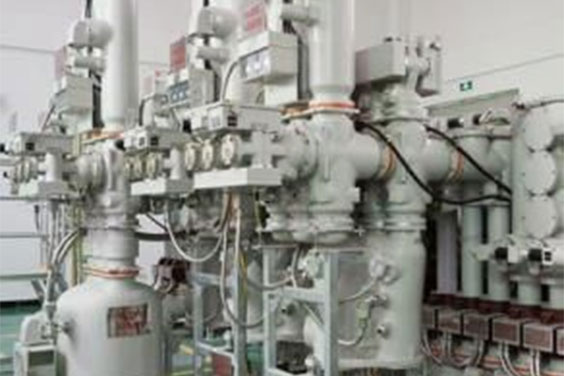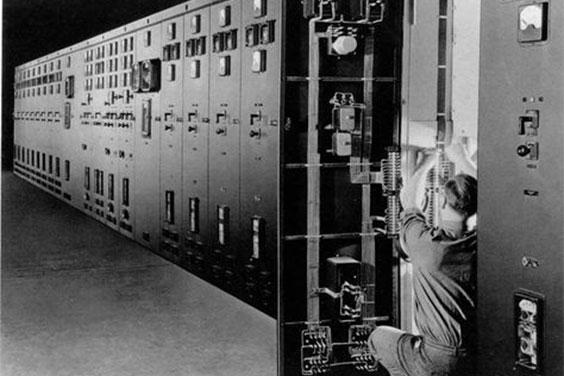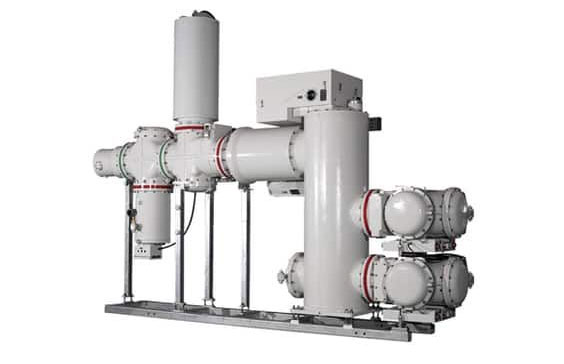
In gas insulated substation, switchgear is a collection of fuses, switches, and circuit breakers. Switchgear’s primary purpose is to safeguard, isolate, and control electrical devices. High voltage switchgear, which is used to operate electric machinery and motors, was developed in the nineteenth century.
Switchgear is installed on both sides of the voltages of the power transformers in distribution systems. In factories, switchgear and a transformer may be housed together in a single housing known as a USS or unitized substation.
What Is Gas Insulated Switchgear/Substation?
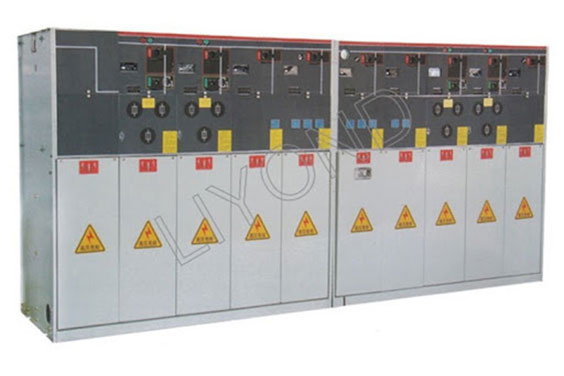
What is gas insulated switchgear? Gas insulated switchgear or substation which is commonly also referred to as GIS substation is metal-encapsulated switchgear that contains high-voltage parts which include high voltage circuit breakers and disconnectors.
GIS switchgear is a gas-insulated system that can be securely handled in confined spaces as well. Extensions, city buildings, roofs, offshore platforms, industrial plants, and hydropower plants are all examples of places where GIS switchgear is applied. It is possible to connect this directly to the power supply’s reliability.
Elecspare has always been a leading switchgear company in GIS technology in terms of rankings, management, switching technology, efficient administration and monitoring, and compactness, and it remains to be so. As a result, GIS substation is extremely reliable, safe to use, and environmentally friendly. It gives an absolute range of solutions for all rankings and applications, ranging from 72.5 kV to 1200 kV, to fulfill present and future switchgear demands.
All of the elements of this form of MV GIS switchgear can be put all together in a very small space by surrounding them in a gas-tight metal enclosure.
The SF6 gas can be utilized as insulation between existing elements of the devices and the grounded metal enclosure. Insulated switchgear, such as SF6, is essential for building an electrical substation in a constrained space. To transmit and distribute electric power, a GIS substation comprises a variety of components such as transformers, circuit breakers, and other components.
Because the components of the gas insulated switchgear are densely packed, the switchgear size has been lowered. In an sf6 gas insulated switchgear, the gas is used as an insulation medium.
Sulfur hexafluoride gas is used to keep the key components of this substation insulated. As a result, the principal components of this substation are covered, and the substation’s size is lowered. This transformer’s high-voltage carrying elements are contained within a metal casing, which is kept in place by cast epoxy spacer insulators in a concentric pattern.
The sulfur hexafluoride gas is injected at a specific pressure between the insulator and the conductor.
Why SF6 Is Used?
For phase to phase and phase to ground protection, a gas insulated substation (GIS) uses a strong insulating gas known as sulfur hexafluoride (SF6), at a modest intensity. The connected metal enclosures, which are enclosed by pressurized SF6 gas, completely enclose the high-voltage wires, high-voltage circuit breaker, switches, current transformers, and voltage transformers. Sulfur hexafluoride is a harmless, inert, and nonflammable gas made up of a sulfur atom encircled by six fluorine atoms that are closely linked.
Due to the obvious electron bonding, sulfur hexafluoride (SF6) is the most used insulating gas in high voltage technologies (electron affinity.) At mean sea level, SF6 has a density of about five times that of atmospheric air and has no color, odor, or taste. SF6 is nearly completely water-insoluble, and its solubility diminishes as the temperature of the water rises, as it does with all other gases. GIS gear systems contain SF6 gas at pressures ranging from 400 to 600 kPa nominal.
This pressure range is appropriate for preventing the gas from forming into a liquid at the lowest temperatures whereby the apparatus could be exposed. SF6 is a gas in which sound travels at nearly three times the speed of sound in air (at atmospheric pressure). As a result, the sound of the arc disruption will be quieter in SF6 than in the air. When compared to air, SF6 has a three-fold higher dielectric strength at 0.1 Mpa (1 atm or atmospheric conditions). Because of the rise in density, the dielectric strength of the SF6 gas rises as the pressure within the GIS enclosure rises.
The dielectric strength of SF6 gas can become significantly higher than that of ambient air at pressures like those seen inside a GIS enclosure. When it comes to interrupting arcs, SF6 is around 100 significantly more efficient than air. SF6 has replaced previous insulating mediums made of oil and air as the industry ideal for disrupting materials used in high-voltage circuit breakers. An sf6 RMU is also a cost-effective option that can fulfill your purpose of efficient switchgear.
Features of the Gas Insulated Switchgear/Substation
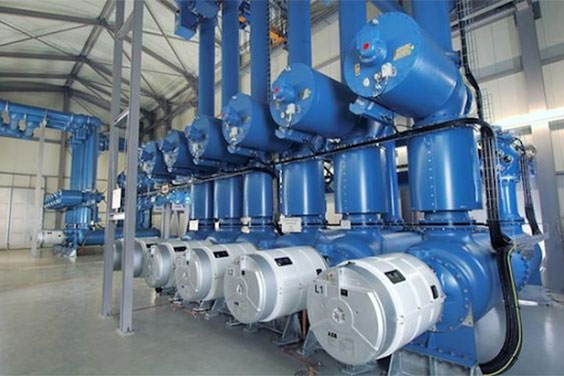
A few major features that gas insulated switchgear has are:
- It features a structure that is modular.
- It has an encapsulation that is secure.
- It has a gas tightness at a high degree.
- It has good usability and affordability.
- It also features a design that is environmentally friendly
What are Gas Insulated Switchgear Components
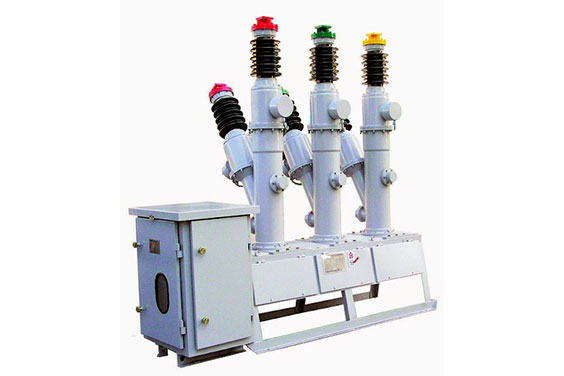
The gas-insulated switchgear components are as follows:
-
Bus Bar
Definition: Bus bars are commonly used to link loads and electrical power supplies. It is responsible for connecting inbound and outbound powerlines. It also makes the connection across the generator and the power system’s primary transformer. A bus bar is a copper or aluminum strip that is used to transmit current in a switchboard, distribution board, or substation.
There are two types of bus bars: flexible and stiff. Aluminum tubes make up the flexible bus bars, which are supported by disc insulator strings on both sides of the gantries. Aluminum tubes form rigid bus bars, which are supported by post insulators. The maximum amount of current that can be securely conveyed is determined by the bus-bar size. They are either flat strips or hollow tubes, and their high surface area to cross-sectional area ratio allows heat to escape more effectively.
Function: Busbars are often situated inside electrical switchgear or panel boards and serve to transmit a large current of electricity. Busbars enable new circuits to split off everywhere across the busway’s route, instead of branching the main supply at one spot. Electrical busbars are conductors, or groups of conductors, that gather power from incoming feeds.
The power is then distributed to the outgoing feeders. It’s a form of an electrical connection where all inbound and outbound electrical currents meet, in basic words. The circuit breaker trips in the case of a malfunction and the defective piece of the busbar is readily detached from the circuit.
-
Circuit Breaker
Definition: A circuit breaker is a piece of switchgear that controls and protects an electrical network. A circuit breaker is a type of electrical switch that operates mechanically. It can safeguard the electrical circuit from serious harm from overloading and short circuit. As a result, whenever a malfunction occurs in a power system, a circuit breaker can isolate that section of the network from the rest of the system.
A circuit breaker can establish or break a circuit manually or automatically under particular conditions, such as no-load, full load, or short circuit. This allows it to be used for switching and protecting various components of the electrical system. A circuit breaker has a built-in set electric current load capacity, and when this capacity is exceeded, the circuit is inevitably shut down. It identifies systematic errors in the circuit, such as a short circuit or overload, and when this fault occurs, it interrupts the stability and prevents the current flow. A circuit breaker is also an important component of metal-clad switchgear.
Function: Circuit breakers enable manual energization and de-energization of circuits, as well as automatic overload protection. A circuit breaker reactivates the circuit as soon as the short circuit or overload has been cleared. A simple flick of the breaker’s operational handle restores the circuit after it has been broken. When a circuit is tripped, it automatically breaks the circuit. It recognizes whether an overcurrent is present. The quantity of overcurrent is measured by the circuit breaker.
Both regular and aberrant currents are created or broken by it. It continually maintains the full load current without overheating or causing harm. It generates and dissipates short circuit current in the magnitude range for which it was intended.
-
Current Transformer
Definition: The high alternating current would be stepped down or reduced by the current transformer. As a result, monitoring current usage in a high voltage system is impossible since the measuring meters are incapable of handling it due to insulation issues. Using the current directly from the system for specific applications would also cause a lot of problems, so we can alleviate these issues by using a high-voltage current transformer.
Since the current in the power system has KA ratings, the current to the transformer is extremely large, and the needed precision is low, the secondary resistance is low. So this transformer would convert the high current to low current, and there would be no need for anything else to perform the calculation.
The measurement can be done with a modest current, so there will be just a small current in the secondary coil that is proportional to the high current in the primary.
Function: It is not viable to connect the high voltage from the power network straight to the equipment. If we do so, the machinery will be damaged. The apparatus may be able to manage this level of power by increasing its size and insulation, but this will be quite expensive, so we can utilize a current transformer to use this power. The current transformer helps in the reduction of the line current to a level that is appropriate for the devices.
The high voltage can be segregated from the measuring instruments by this component. Short circuit current can be prevented from devices. It would also determine if there are any anomalies in the present line, such as sudden changes in the current level, and others like this.
-
Voltage Transformer
Definition: Voltage transformers are a form of instrument transformer that reduces or steps down the system voltage to a secure and quantifiable level. The voltage transformer would enable the energy meter to detect electrical service connections with higher voltages than the meter can handle. When linked to the primary, this medium-voltage transformer would produce a comparable quantity of voltage at the second terminal.
As a result, the primary windings must have more spins than the secondary windings in need of this transformer to step down the voltage. In a continuous and linear manner, the voltage transformer would transform the higher voltage to a lower value.
Function: It will be quite handy for calculating the amount of energy utilized. This gadget would safeguard electrical systems from faults and disruptions. Event logs, synchronization, and event recorders can all benefit from voltage signals.
We can compute the system’s power or resistance, as well as its direction while measuring the voltage. By monitoring the voltage, we can estimate the O/V, U/V, O/F, U/F, and excessive fluxing security. It is an important component for an effective switchgear service.
-
Cables
Definition: Electric power is transmitted through power cables from substations to required destinations. Power cables, which are made up of two or more conductors and are covered by an outer covering known as insulation, can be deployed either overhead or underground, depending on the demands.
Function: Electrical cables link two or more terminals, allowing electrical signals or current to be sent from the primary source to switchgear and other pieces of equipment. Cables are utilized for a wide range of purposes. Other electronic equipment, such as power and signal circuits also, rely heavily on cables
Advantages of Gas Insulated Substation/Switchgear
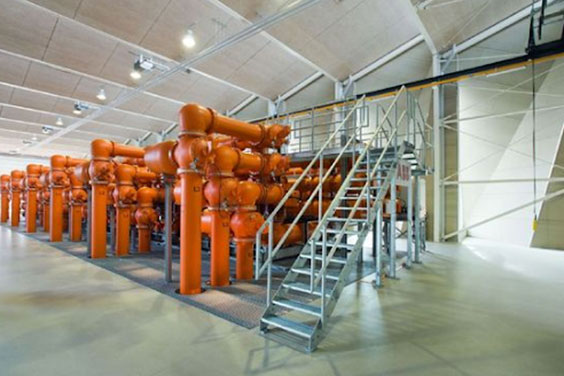
The following are some of the benefits of medium voltage gas-insulated switchgear.
- In comparison to alternative systems, this switchgear offers a high level of flexibility and reliability.
- This type of switchgear is the finest solution for diverse substations, such as indoor and underground, due to the gas encased design.
- The inhabited area of indoor and outdoor substations can be lowered by adopting this switchgear.
- This switchgear’s configurations can be used on any form of the bus bar, including single, double, single with transfer bus, double bus bar with double circuit breaker, and ring type bus bar.
- It takes up less space.
- It provides protection from natural disasters
- Site installation is at your discretion.
- Maintenance is reduced.
- Operating costs of this type of switchgear are lower.
- GIS designs can be used anywhere that these characteristics are desired, such as less maintenance, less area, less environmental effect, and so on.
Disadvantages of Gas Insulated Substation/Switchgear
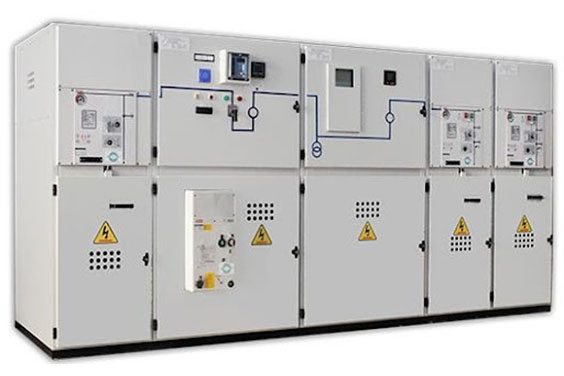
- When compared to a traditional AIS, the system costs more.
- Getting SF6 gas to the job site can be difficult.
- Indoor GIS switchgear necessitates a different structure.
- Cleaning and servicing the system are essential for reducing conductivity particle pollution.
- Flash overs are caused by particle or humidity pollution within the container.
- When a failure occurs at a GIS substation, disruptions can last for hours or even days, and system damage is almost always substantial.
- Maintenance access to live parts is more difficult and difficult to diagnose without gas reclamation and module removal.
Applications of Gas Insulated Switchgear
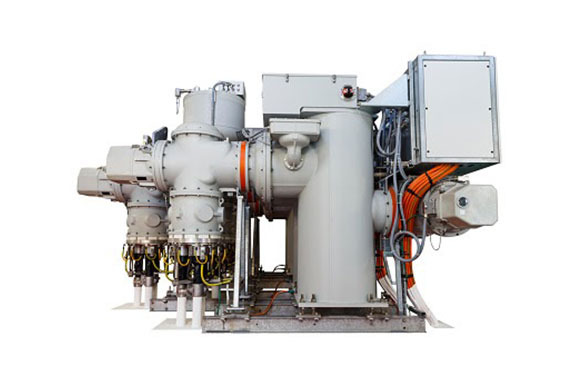
A few of the many applications of Sf6 insulated switchgear are:
- It is implemented in urban areas when space is limited.
- It is generally installed on the inside of the structure.
- It can be used in a hydroelectric power plant
- It is a substation for offshore power.
- It is a substation in the earth. It has applications involving high voltage.
- It can be deployed in an industrial setting with a lot of pollution.
Gas Insulated Switchgear Working Principle
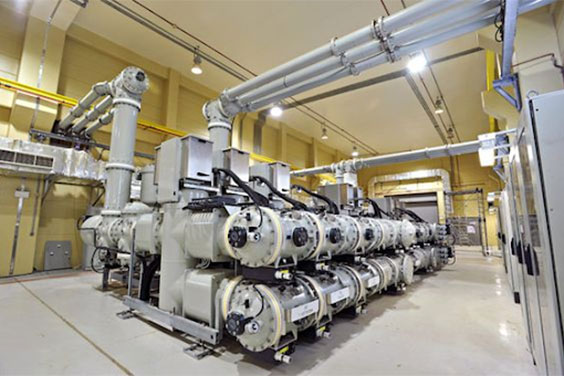
The gas-insulated switchgear working principle suggests isolators open or close and cut off current circuits, disconnectors electrically separate circuits and open voltage, and other components make up the switchgear. The term for a unit that contains these parts and circuits in a solitary gas tank with a small footprint is GIS switchgear. They work together to evaluate any faults and shut the power supply to eliminate any damage to the electrical devices or machinery.
The Installation and Maintenance of Gas Insulated Substation
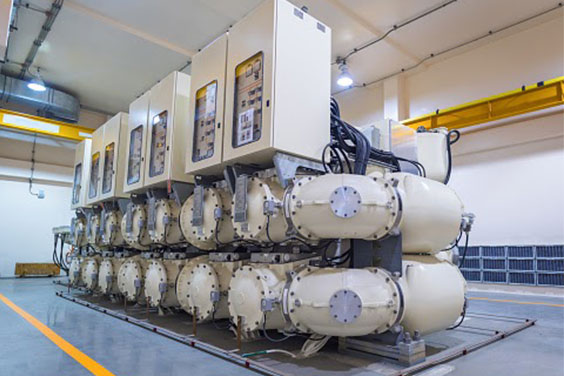
The Installation Process
For high dependability and optimum life-cycle efficiency from the start, rely on approved on-site setup and testing by specialists. A high level of operating reliability is ensured through proper installation and commissioning. MNS installation and commissioning processes must be followed in order to achieve a problem-free start-up.
The usage of medium and high voltage systems service specialists assures that the switchgear is installed and operational in a safe and correct manner. For medium and high voltage switchgear and equipment, Liyond certified service professionals provide experienced on-site installation, hot and cold commissioning.
Solutions for construction supervision include:
- Examine the foundation’s integrity.
- Cubical activation monitoring
- Connections between transport sections are supervised (e.g. main bus bars and cubicles connection)
Monitoring functions for installation include:
- Inbound and outbound cable connections are monitored.
- Check the earthing of the switchgear
- Testing the thickness of the insulation
- Internal wiring inspection
- Check for serial communications within the company
- Checking the auxiliary voltage supply
Maintenance or Repair Process
Commissioning
- Circuit breakers, motor starters, and feeders have device parameters that must be set.
- Systems’ functioning Breakers, motor starters, and feeders are all types of circuit breakers.
- Analysis of serial communications to DCS and SCADA, comprising cable route isolation and communications verification
System examination and modification to boost the installation’s performance better and maintenance easy:
- Evaluation of the application
- Evaluation of the configuration
- Analysis of Vehicle Protection
- Assessment of communication
- Evaluation of the Incomer Security setting
The following are the advantages to manage supervising switchgear installation and commissioning:
- The switchgear be more reliable
- Unusual outages are less likely
- A quicker start-up
- Optimal performance throughout the life cycle
Testing of GIS Switchgear
Substations are critical network components that must operate at a high level of reliability. Gas-insulated switchgear (GIS) has a predicted service life of 35–50 years, throughout which time its roofing system must sustain all voltage loads without servicing.
The following are the standard test procedures:
- Voltage test on the alternating current
- Detection of partial discharge
- Test for lightning surges
Testing of GIS include:
- On a 123 kV system, a GIS test setup is used.
- On a medium-voltage GIS, a high-voltage test and partial discharge monitoring were performed.
- UHF partial discharge analyzer with many channels.
- On-site testing of a 380 kV GIS using a resonant circuit to create voltage.
- Insulation fault types on a GIS.
Where to Find Reliable GIS Switchgear Manufacturers
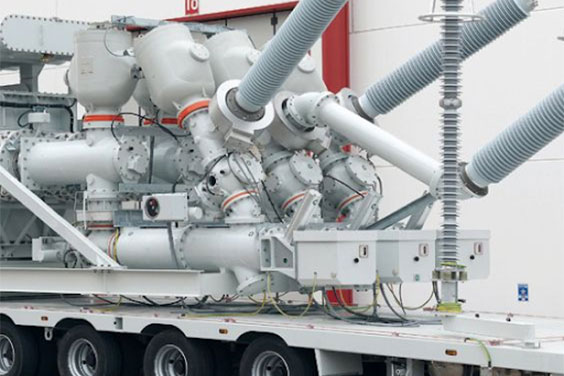
Get your electrical switchgear solution from one of the best switchgear manufacturing companies. Elecspare uses various modular designs in the switchgear systems, enabling a simple and fast setup to meet your individual electric grid and environmental demands and providing you with solutions with excellent adaptability and construction flexibility. From Elecspare, you can get all the range of switchgears, ranging from medium voltage gas insulated switchgear to metal clad switchgear.
Conclusion
GIS is one of the best functional switchgear that fulfills most purposes. Particularly if you have a small facility, gas insulated switchgear is the best choice you must go for. You can contact the leading switchgear manufacturer to get your custom switchgear requirements.

